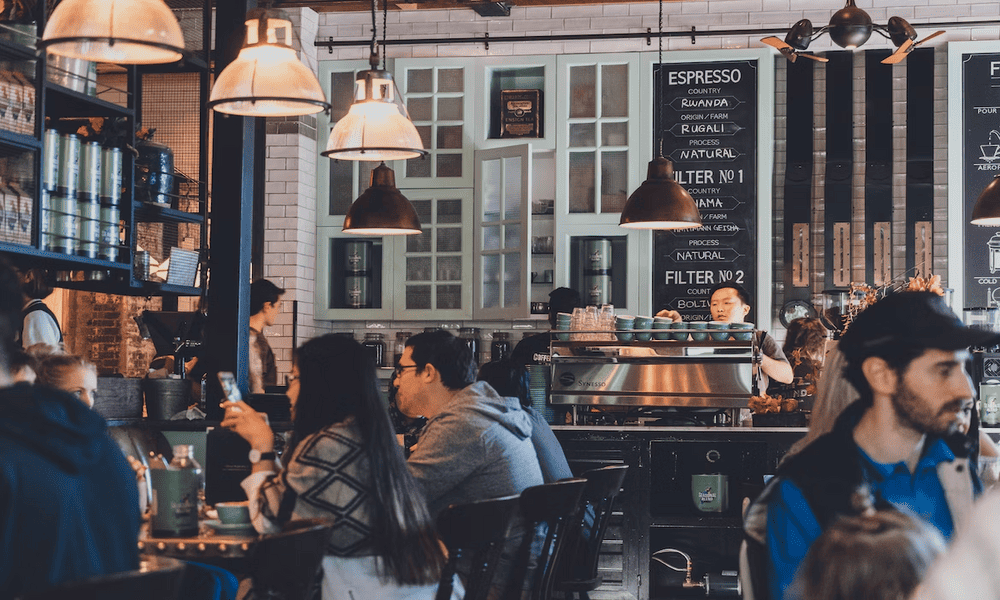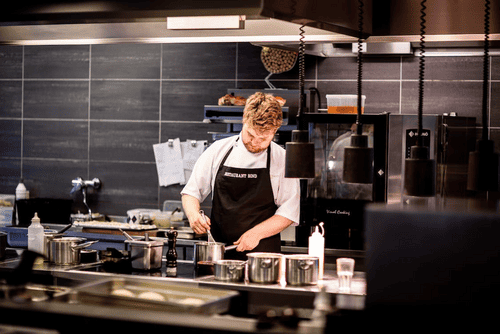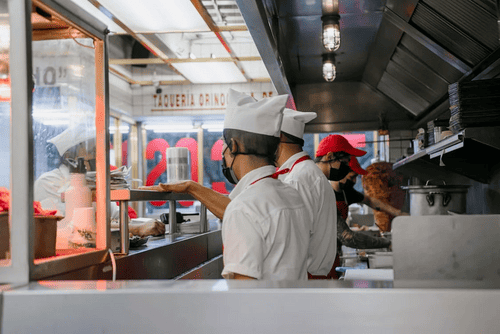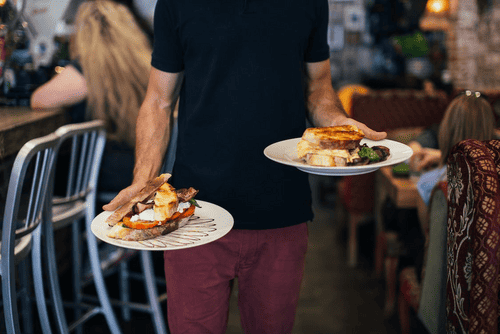Front Of House (FOH) Vs. Back Of House (BOH): What’s The Difference?
For a restaurant to run smoothly and efficiently, you should divide activities i...

Whether you’re looking to hire employees for a fine dining establishment, a food truck, or a fast food business, you’ll need any number of restaurant positions to make up the foundation of your team.
A fine dining establishment may need all 24 positions on this list, while a food truck may only need three or four. It all depends on the type of business you run and the number of responsibilities you want to assign to each employee.
In this article, we discuss the most common restaurant positions so you’ll have a better idea of who you need to hire for your business.

The owner is at the top of the restaurant positions hierarchy. Obviously, this isn’t a position you hire for, but it’s worth mentioning because owners are responsible for the overall operation of the business, including:
The owner may also have a hand in developing relationships with suppliers, vendors, and even customers.
The general manager is responsible for the day-to-day operations of the business and oversees all the other restaurant positions on this list (with the exception of the owner, of course).
In some cases, the general manager may also be tasked with some or all of the higher-level responsibilities that the owner would typically handle, such as payroll and approving overtime.
The assistant manager — or managers, as there may be more than one — is responsible for helping the general manager with various aspects of the business, including:
The food and beverage manager typically oversees everything to do with the way the food and drinks are prepared and served.
Depending on the other positions your business has, the food and beverage manager may be responsible for:
A kitchen manager is responsible for everything that happens in the back of the house. Typically, they are tasked with making sure that the kitchen (and kitchen staff) runs as smoothly and efficiently as possible.
In many cases, the kitchen manager will also help coordinate activities in the front of the house so that food and drink are delivered according to the business’s high standards.

In cooperation with the kitchen manager (if there is one), the executive chef helps to develop menus, prepare food, manage the kitchen team, and maintain health and safety standards.
In some cases, restaurants will fold the responsibilities of the kitchen manager, the food manager, and even the assistant manager into the executive chef position.
It all depends on the organizational structure of the business itself.
As kitchen restaurant positions go, the sous chef — or assistant chef — works under the executive chef to ensure that all food is prepared correctly, on time, and to the high standards of the business.
In most cases, they will also be responsible for managing other parts of the kitchen staff to make sure that everyone is doing their job correctly.
The pastry chef works underneath the sous chef and the executive chef to develop, prepare, and execute all the desserts the restaurant offers. In larger restaurants, the pastry chef will also be tasked with managing a team of assistants.
The line cook is responsible for a variety of tasks, including:

Depending on the type of business you run and the number of other restaurant positions you employ, you may need to hire a short-order cook.
These team members are responsible for preparing food orders promptly and accurately — usually on very short notice.
Busy restaurants will often employ a prep cook to prepare any components of the dishes to be served ahead of time so that production can proceed quickly and efficiently once an order is placed.
Prep cooks are typically responsible for everything from chopping vegetables to making sauces.
If you run a fast food restaurant, a fast food cook is the one who assembles the customer orders.
In some cases, they may also be tasked with cooking the food first — as in grilling a hamburger — before assembling and plating or wrapping the final product.
The dishwasher has a variety of responsibilities that sometimes extend beyond just operating the cleaning equipment.
Their primary responsibility is to ensure that all dishes, flatware, and cups are clean, sanitized, and ready for use. Secondary responsibilities often include stocking the clean dishes for cook and server use and cleaning up spills or messes in the kitchen.
Some restaurants employ a stocker who is responsible for unloading, placing, and maintaining the business’s food, beverage, and supply inventory.

Fine dining restaurants may choose to employ a sommelier who is responsible for the wine — and, in some cases, the spirits — the business offers.
Sommeliers typically help customers choose the right wine to go with their meal, but may also order the wines to stock and provide input for setting any corkage fees the restaurant may charge.
A server’s duties will often vary depending on the type of restaurant they work in, but normal responsibilities include:
The host and hostess restaurant positions are responsible for greeting guests as they arrive, seating them at available tables, answering phone calls, and managing reservations.
They may also be asked to perform light cleaning when the need arises and to run errands if another host or hostess is working at the same time.
The bartender’s primary responsibility is taking beverage orders from servers, or directly from customers, and then producing or mixing those drinks.
They are also responsible for keeping their work area (the bar) clean and stocked with the supplies they need to do their job.
Busy bars and restaurants will sometimes employ a barback who works as an assistant to the bartender and is primarily responsible for keeping things clean and organized, retrieving supplies from inventory, and handling customer questions.

Cafes and coffee shops employ baristas who mix, prepare, and serve the beverages that customers order.
While not all sit-down restaurants have a barista on staff, some will train their bartenders, servers, or hosts/hostesses to prepare specialty hot drinks for their customers.
As restaurant positions go, drive-thru operators are typically employed by fast-food-style eateries or those that offer curb-side and take-out service.
They are tasked with receiving customer orders, entering them into the POS system, handling payment, and providing change.
Restaurants of all types and sizes may employ a cashier to collect money or the appropriate payment method from customers, enter the bill into POS software, and provide the correct change if necessary.
Those employed as bussers are responsible for cleaning and resetting tables and, in some cases, providing beverages and bread to newly seated customers before the server arrives to take their order.
A food runner’s job is to ensure that the finalized dishes are put together correctly and to deliver those dishes from the kitchen to the servers or directly to the customer’s table.

Whether your team consists of two restaurant positions or all 24, you can coordinate their activities with Sling.
Sling gives you the tools necessary to do so, including:
Regardless of the industry, Sling can help keep you and your team members organized and focused on providing the best food-service experience possible.
For more free resources to help you manage your business better, organize and schedule your team, and track and calculate labor costs, visit GetSling.com today.
See Here For Last Updated Dates: Link
This content is for informational purposes and is not intended as legal, tax, HR, or any other professional advice. Please contact an attorney or other professional for specific advice.
Schedule faster, communicate better, get things done.